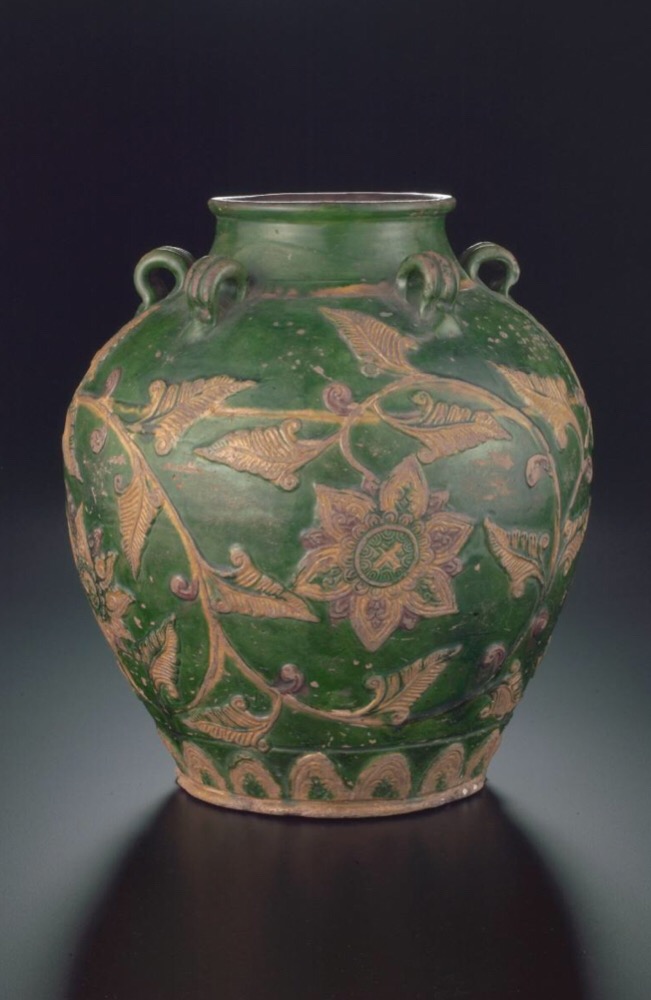
A green, yellow and brown-glazed "Tradescant" storage jar. Ming dynasty (1368-1644), around 1600
Tradescant jars are characterized by their ovoid shape, often featuring a vibrant green lead glaze adorned with applied floral scrolls. Their robust quality is typical of the storage containers produced in Guangdong and Fujian. .
These vases, known as "Tradescant" jars, are named after the English botanist John Tradescant (ca. 1570-1638), who collected curiosities during his travels. An identical jar is showcased in the Ashmolean Museum, Oxford. These jars, originating from the Ming period (1368-1644), were crafted in the kilns of Guangdong and Fujian, southern China, and were widely exported to Southeast Asia, including Indonesia, Thailand, the Philippines, and the Pacific Area.
Illustrations of similar jars can be found in the works of W.B. Honey in 'Ceramic Art of China and other Countries of the Far East' (London, 1945, pls. 81 and 102, in the Victoria and Albert Museum), S. Jenyns in 'Ming Pottery and Porcelain' (London, 1953, pl. 113B, from the Eumorfopoulos Collection), and B. Harrison in 'Pusaka Heirloom Jars of Borneo' (Oxford, 1990, pl. 77, Princessehof Museum, Leeuwarden).
Tradescant’s collection formed the original core of the Ashmolean Museum, Oxford. The Ashmolean came into existence in 1682, when the wealthy antiquary Elias Ashmole gifted his collection to the University. It opened as Britain’s first public museum, and the world’s first university museum, in 1683. Though the collection has evolved considerably, the founding principle remains: that knowledge of humanity across cultures and across times is important to society. A laudable intention, but the uncomfortable truth is that much of the collection was inevitably selected and obtained as a result of colonial power.
Elias Ashmole acquired his collection from two gardeners: John Tradescant, father and son. Employed by the wealthy Earl of Salisbury, the Tradescants had travelled the world known to Europeans, shipping back new and exotic plant specimens for the Earl's gardens. In the course of their travels they also acquired a remarkable collection of botanical, geological and zoological items as well as man-made objects. The Tradescant’s themselves established a museum in Lambeth, South London, known as ‘The Ark’ to house their collection in 1634. A visitor to this original museum commented that ‘a man might in one day behold…more curiosities than he should see if he spent all his life in travel.’ The collection contained treasures such as the ‘mantle’ (actually a wall hanging) of Pocahontas's father Powhatan, and the stuffed body of a dodo.
A